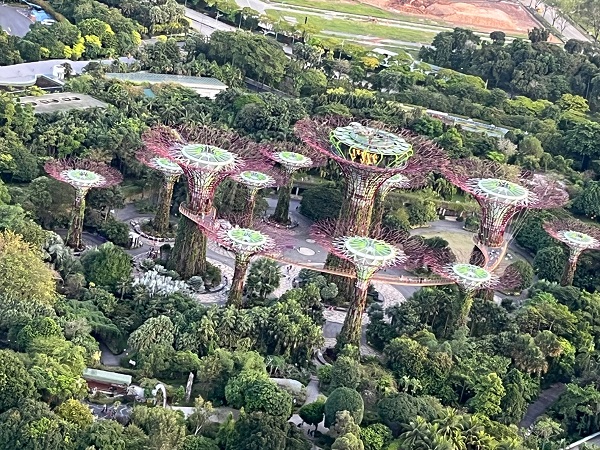 Super Trees in Singapore;
Super Trees in Singapore;
Long-distance travel is back on the agenda and many are now looking forward to taking long trips again, if they have not already done so since the relaxation of travel restrictions in the aftermath of the COVID-19 pandemic.
While China and some other countries still have restrictions in place, or have re-imposed restrictions, most countries have by now relaxed theirs. And long-haul travel is starting to become easier, despite airlines (and hotels, car-hire companies, etc.) still charging prices higher than pre-pandemic in 2019, sometimes significantly so. Most of these are linked with supply chain issues, staffing shortages and gaps in the knowledge base.
Having flown to the US last November, it is difficult to forget the sheer volume of documentation required at that time (so soon after the relaxation of restrictions), which was staggering, enhanced by deciding to print everything out in hardcopy format in addition to having all documents electronically on my phone / laptop. We were happy we did this as, not only did it give us peace of mind, but we came across passengers at check-in who had either forgotten or who had not been aware that they needed the entire library of documents, as well as one poor woman in tears as she had lost her phone containing all her documents and who did not have printed copies.
This trip, firstly to South-East Asia and ultimately down-under to Australia, was comparatively much more straight-forward in terms of documentation and bureaucracy, with the pandemic actually resulting in some more simplified procedures.
The online procedure for applying for a visa for Australia have not changed, but it is now possible to complete an online form for (and print a hardcopy of) a Singapore Arrival Card - much more efficient than completing one in the plane during the flight or upon landing, before passing through immigration. Other documents required included up-to-date COVID-19 vaccination certificates, confirmation of addresses (hotels / family) where we would be stating (at both locations), but that was basically it.
Interestingly, despite being required, our printed / digital insurance certificates were never requested, unlike when visiting the UAE earlier this year, when they were a definite pre-requisite to receiving our boarding cards for embarkation. and our COVID-19 certificates were checked just twice, before getting on the flights to Singapore and for Australia.
It was also interesting to see how more automated some processes and procedures have become in some airports. In both Singapore and Australia, check-in using stand-alone booths was the rage (I’m not stating that Europe does not have some, even in Luxembourg airport, but these are usually complementary to staffed positions and lengthy queues). But it was automated baggage drop-off that I came across the first time on this trip; after checking in and getting one's boarding card from a robot (stand-alone booth), one weighs one’s bags on a scales, scans one’s boarding card (wither printed or digital) and prints the luggage tag(s) to put on the cases before they are whisked away on a conveyor belt.
And on-board, really the only difference is that some airlines / classes now have either personal iPads for use as personal entertainment consoles; either that, or one is invited to download an app (specific to the airline, as Luxair has now started to do on board its Boeing 737 flights) and then - whilst in flight mode - access the plane’s wifi network (no Internet connection) to avail of the in-flight entertainment.
Overall, however, long-haul travel is much the same as before, but with technology a bit more advanced…
Chick here for the second of the three-part travel blog, and here for the third.









